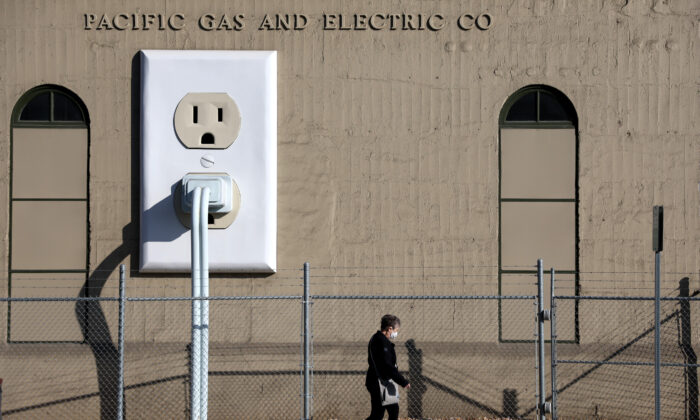Commentary
It redundantly uses both “accelerate” and “accelerates” to emphasize what it’s really about, “California’s clean energy transition.” The supposed “cut” in “residential electricity prices” is just the bait to get people to go along with draconian “decarbonization.”
“This new billing structure puts us further on the path toward a decarbonized future, while enhancing affordability for low-income customers and those most impacted from climate change-driven heat events,” said CPUC President Alice Reynolds, as quoted in the announcement. “This billing adjustment makes it cheaper across the board for customers to charge an electric vehicle or run an electric heat pump, which will spur greater uptake of these technologies that are essential to transitioning us away from fossil fuels.”
- A “flat rate at $24.15 per month, which will reduce the price of a unit of electricity by 5 to 7 cents per kilowatt-hour.”
- “All customers, regardless of income or location, will be better off financially if they choose to electrify their homes and/or vehicles under the new billing structure compared to today’s rates. … A customer that electrifies their home and vehicle will save on average $28-44 a month compared to under today’s rates.” That assumes they can afford electric cars, which are more expensive to buy and maintain than gas-power cars, and new electric stoves.
- The rate will be $6 per month for “Customers enrolled in the California Alternate Rates for Energy (CARE) low-income assistance program.”
- The rate will be $12 per month for “customers enrolled in the next level up of income qualified program, the Family Electricity Rate Assistance (FERA), as well as those residing in deed-restricted affordable housing with incomes at or below 80% of the area median income.”
- No income verification will be required, only proof of membership in CARE or FERA, which already have verified the incomes of recipients.
Well, with all that money being saved, where will the utilities get the money to run the system? Calmatters reported April 19, “The biggest losers will be middle income households who just miss the cut-off for a discount and who currently have small energy bills. The biggest winners will be the biggest users.”
Of course, we really won’t know the actual cost until the new rates are imposed 18 months or more from now. The CPUC could find rising costs for the utilities mandate higher “fixed” pricing.
Moreover, it’s worth remembering in California the “middle class” starts at over $100,000 of family income. That’s well above the CARE and FERA limits quoted above.

Shocking Problems Coming
“The only data they have is the current income or something approximating that,” he said of what’s being used in the new “fixed-rate” system. “Or they could use current property values. But they don’t have anything more than that, and there are so many different ways to compare people on wealth.”
Another “equity” aspect he mentioned is “lifetime exposures,” because people’s incomes vary over time. Students usually are poor but get taxpayer subsidies for learning how to make more money in the future. In some cases it’s for such high-paying fields as computers or medicine.
While in school, individuals will benefit from paying the low electricity rate. Other factors that contribute to the concept of “equity” include marriage, number of children, and luck. It is unclear what level of equity one should have, and the proposal aims to overlook this ambiguity.
Mr. Michaels cautioned that the CPUC and legislators may introduce new criteria on top of existing considerations of “equity” and “clean energy transition.” This could lead to a slippery slope towards socialism, similar to how the DMV suspends licenses for individuals behind on child support payments.
The global decarbonization effort is not being heeded by many countries, including those in Asia which continue to increase carbon emissions. Despite claims that the new rate structure will aid in decarbonization, there is no concrete evidence to support this.
The implementation of the new rate structure is viewed as a socialist scheme by some, with subsidies benefiting the poor and electric car drivers, while the middle class will bear the brunt of higher costs. This is seen as a political move to address climate change and equity issues.
Source link







